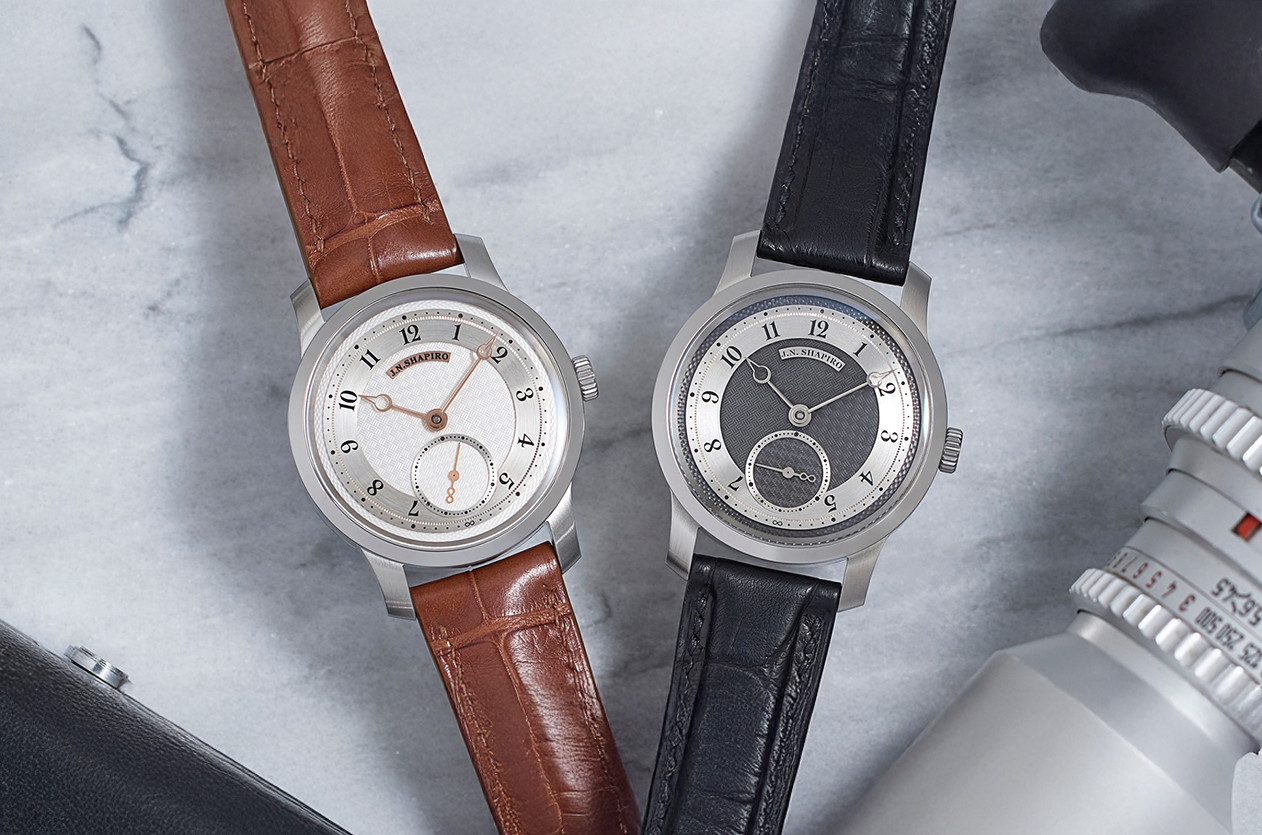
Introducing The New J.N. Shapiro Infinity Series Pure
Welcome to the hub of the horoloy
The Remarkable Journey of Titanium in watch industry, Where Science Meets Style

Titanium, initially discovered in the 1790s by amateur geologist William Gregor in Cornwall, England, earned its name from the colossal predecessors of Greek gods. However, its extraction from ore began only in the 1900s, a process that remains both laborious and costly to this day. Despite being the seventh most abundant metal on Earth, the intricate extraction contributes to its higher cost compared to steel. Renowned for its lightness, strength, durability, and corrosion resistance, It played a crucial role in crafting items ranging from artificial joints to military aircraft.

In the realm of watchmaking, the Japanese company Citizen pioneered the exploration of titanium's potential by introducing the world's first titanium watch, the Citizen X-8 Chronometer, in 1970. This marked the beginning of a transformative journey over the past 50 years. but the Swiss, who were, at the time already cautious of quartz and Japanese technology in general, took time to warm up to the metal. The IWC Porsche Design Titan Chronograph, introduced in 1980, was the first Swiss watch made with titanium.

While platinum and steel are on the whiter, shinier side of silver, titanium has a darker grey, almost matt finish. However, both platinum and steel are denser, and therefore substantially heavier than titanium. As a metal, it has a number of properties that make it ideally suited for a wide range of applications, it’s incredibly strong, lightweight, non-toxic, and corrosion-resistant. For watches, this makes for an ideal case material. At only 60% the weight of stainless steel, titanium watches wear extremely comfortably without sacrificing any of the strength of steel.

In the watch industry, the most practical use of titanium is for the case of a watch. The body, with its constant wear and tear, must resist scratches caused due to everyday use. Almost every brand of note now features collections with titanium watches. Beyond the case material, the metal is used for parts of the movement, Like Omega’s caliber 8928 used Bridges and main plate in titanium, or De Bethune DB28XP with the Caliber DB2009v5 uses a Titanium balance wheel, among others. Bracelets made from titanium have become more popular, owing to the material’s hypoallergenic nature. For titanium watches that are paired with leather or textile straps, brands prefer titanium on the clasps. An example is the Greubel Forsey Cardan Tourbillon.

Grades Of Titanium Watches And Their Finishes
Titanium often comes out of the ground in the form of an ore called ilmenite or a mineral called rutile, before it is refined and shaped into one of the many alloys. Out of the 38 or so grades recognised by the American Society for Testing and Materials “ASTM”, only two have been extensively used for watches – grade 2 and grade 5.
Grade 2 is the purer form of the metal although it is not as robust as grade 5, an alloy containing six percent aluminum and four percent vanadium. Grade-5 titanium is extremely difficult to mold, due to its hardness. over time, the inherent qualities of the metal tend to cover nicks easily. When exposed to air, the titanium dioxide layer that forms over it prevents the metal from further reactions, so, while even titanium watches will get the occasional nick, they won’t look as damaged as, say, steel watches. Brands sometimes use treatments such as a DLC (diamond-like carbon) coating to make titanium watches stronger and more resistant to scratches.
The incorporation of titanium in watches stands as a groundbreaking advancement in the watchmaking industry, reshaping the landscape of timepiece design and functionality. This lightweight and durable material not only enhances the overall aesthetics but also contributes to increased wearability and comfort for watch enthusiasts.
As we navigate the future of horology, the integration of cutting-edge materials like titanium serves as a testament to the ever-evolving nature of watchmaking. Embracing these advancements not only ensures the creation of timeless pieces but also opens doors to endless possibilities, setting a new standard for what a modern watch can achieve.
It's a fusion of science and artistry that propels timepieces into a realm where innovation and tradition coalesce, ensuring that the heartbeat of horology continues to resonate with enthusiasts for generations to come.

Introducing URWERK Unveils Its Latest Creation: The UR-150 Scorpion

Editorial De Bethune, Pioneering Innovation Through Time

Introducing Daniel Roth Unveils New Tourbillon Souscription

Auction F.P. Journe Wins the Battle for a Breguet Legend

Introducing The S3 Deadbeat Seconds Power Reserve from Garrick

Editorial U.S. Tariffs and the Dollar Rate, A New Challenge for the Swiss Watch Industry

News Dubai Watch Week 2025 Will Be the Largest Ever with 90 Brands Participating

Auction Phillips Achieves CHF 43.4 Million at the Geneva Watch Auction XXI

Technical The Frequency, Why It Matters in Mechanical Watches

Editorial Exploring the Distinctive Charm of Regulator Watches

Summary Manuel Emch, Waqt’s Personality of the Year 2024
Comment Delete Text
This page is available in English only. Please click below to visit Arabic Home page!